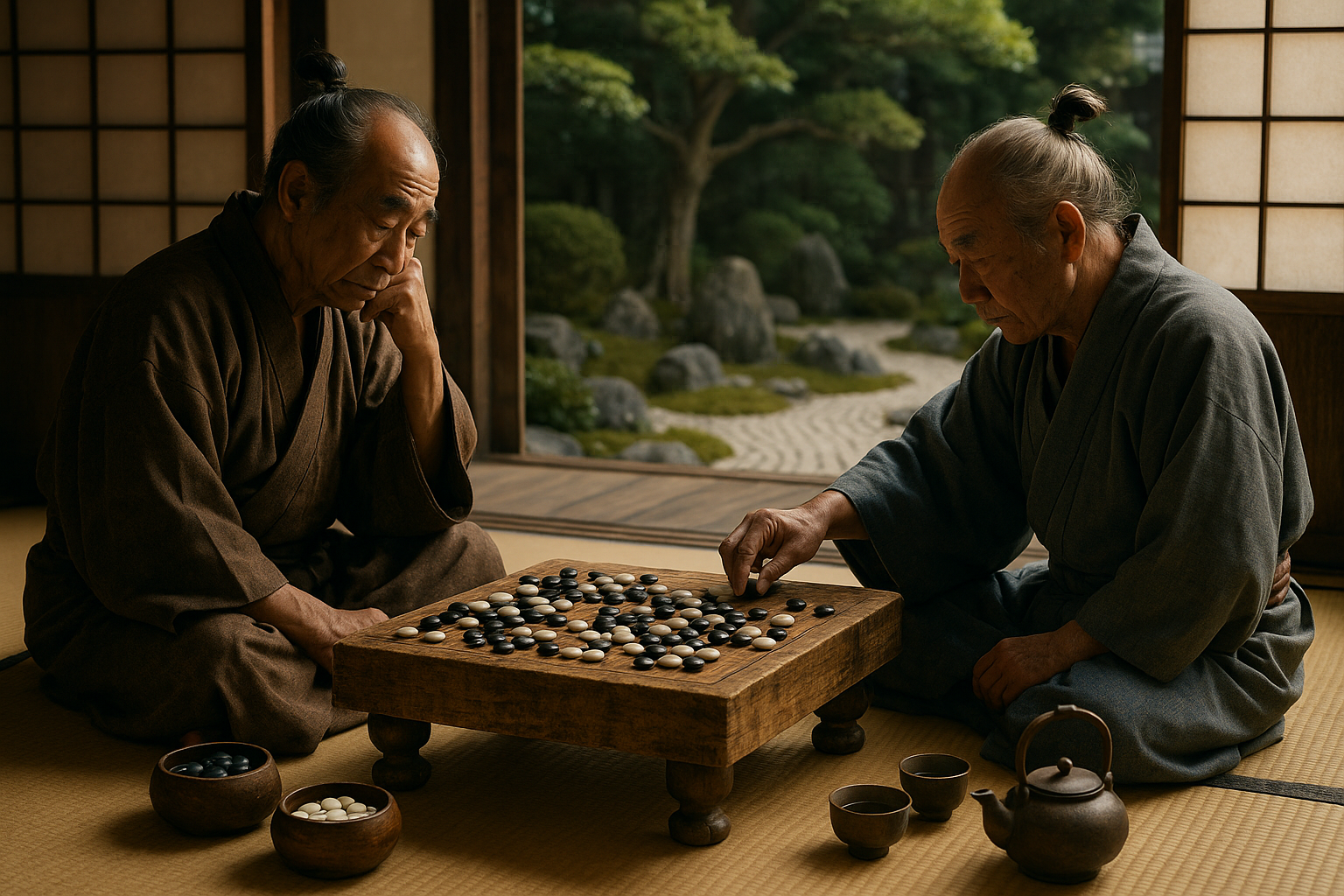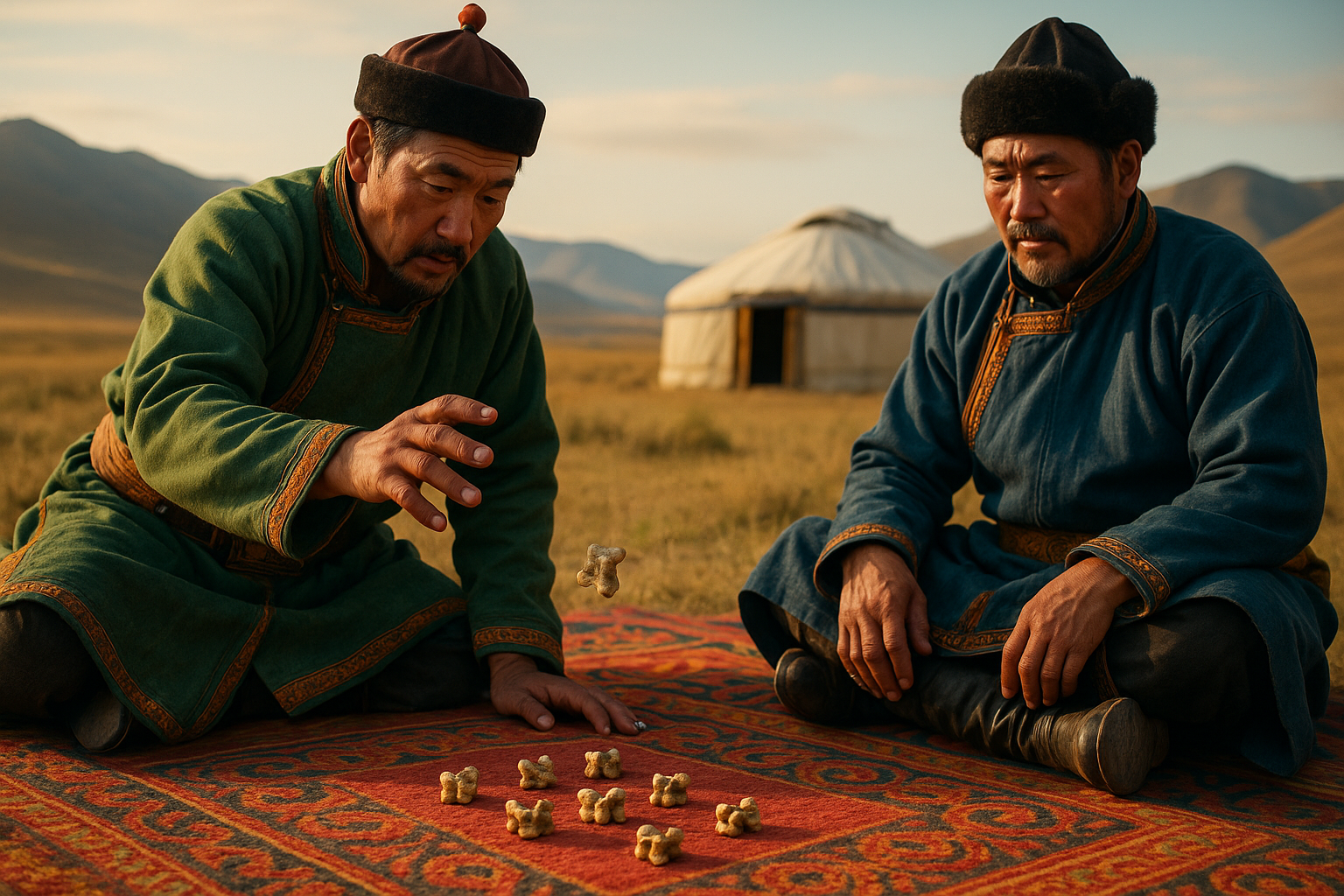Imagine a world where every move you make is not just a simple act, but a strategic decision that could alter the course of history. This is the essence of the ancient game of Go, a timeless tradition that has captivated minds for centuries. Originating from China over 4,000 years ago, Go made its way to Japan, where it became more than just a game; it evolved into a profound cultural phenomenon. In this blog, we will delve into the rich history of ancient Japanese Go boards, exploring how this game of strategy and skill has left an indelible mark on Japanese culture and beyond.
Go, known as “Igo” in Japanese, is much more than a pastime. It’s a battle of wits, a dance of intellects, where each stone placed on the board can signify power, influence, and territory. Unlike other strategy games, Go is governed by simple rules but requires deep strategic thinking, making it a favorite among those who revel in intellectual challenges. But what makes Go truly fascinating is not just the game itself, but the beautifully crafted Go boards that have been used throughout history. These boards are more than just playing surfaces; they are works of art, steeped in tradition and cultural significance.
The journey of Go boards begins in ancient Japan, where artisans dedicated their lives to crafting these exquisite pieces. Using the finest materials, such as Kaya wood, these boards were meticulously created to provide the perfect playing experience. The rich grain of the wood, the precise carving of the grid, and the resonance of the stones clicking against the board all contribute to a sensory experience that transports players into a realm of concentration and focus. 🪵✨
As we delve deeper into the history of these ancient Go boards, we’ll uncover stories of legendary games and the players who mastered them. From samurai warriors who honed their strategic skills on the Go board, to emperors and scholars who saw the game as a microcosm of life itself, Go has been a tool for education, strategy, and even diplomacy. The influence of Go on Japanese culture is undeniable, and its legacy can be seen in various aspects of modern Japanese society.
In this comprehensive exploration, we’ll also examine the symbolism embedded in the game of Go. Each stone, whether black or white, holds significance, and the balance between the two reflects the philosophy of yin and yang. This balance is not just a concept within the game, but a reflection of the harmony sought in life. The strategic depth of Go has made it a subject of study not only for game enthusiasts but also for philosophers and thinkers who appreciate the game’s reflection of life’s complexities.
Furthermore, we’ll explore how Go has transcended cultural boundaries, capturing the interest of people worldwide. Today, Go is played by millions, with international tournaments and online platforms bringing together players from all corners of the globe. The ancient Japanese Go boards, with their rich history and craftsmanship, continue to inspire new generations of players who are eager to immerse themselves in this strategic tradition.
Throughout this article, we will uncover the intricate craftsmanship of these Go boards, the fascinating tales of historical games, and the enduring legacy of Go in modern culture. We’ll also provide insights into how the game has adapted to the digital age, maintaining its relevance in a rapidly changing world. Join us as we explore this captivating journey, discovering the timeless tradition of strategy and skill that is Go. 🎲🌍
Whether you’re a seasoned Go player or a curious newcomer, this exploration of ancient Japanese Go boards promises to enrich your understanding of this elegant game. By the end of this article, you’ll not only appreciate the artistry and strategy behind Go but also gain a deeper insight into the cultural and historical context that has shaped its evolution. So, prepare yourself for a journey through time and tradition, as we uncover the secrets and stories behind the ancient Japanese Go boards.

Conclusion
In conclusion, the exploration of ancient Japanese Go boards offers an intriguing insight into a world where strategy and skill were not just games but a way of life. Throughout this article, we have journeyed through the historical significance of Go in Japan, appreciating how these beautifully crafted boards symbolize more than just a game—they are a testament to centuries of cultural tradition and intellectual pursuit.
Starting with the origins of Go, we saw how this game, believed to have been brought to Japan from China, evolved into a highly respected art form and a reflection of the strategic thinking that permeated Japanese society. We delved into the craftsmanship of Go boards, understanding the meticulous work involved in creating boards that were not only functional but also aesthetically pleasing. This craftsmanship is a reflection of the values of precision and dedication, which are deeply ingrained in Japanese culture.
Moreover, the influence of Go on Japanese society was profound, impacting everything from social hierarchy to philosophical thought. As we discussed, the game was more than just a pastime; it was a tool for teaching strategy, patience, and forward-thinking—skills that are as relevant today as they were hundreds of years ago.
The article also touched on the symbolism of Go in Japanese art and literature, where the game often serves as a metaphor for life’s complexities and challenges. This cultural impact highlights the game’s ability to transcend its immediate context and speak to universal themes of struggle, perseverance, and wisdom.
Understanding the historical context and cultural significance of Go boards gives us a deeper appreciation of the game and its place in both historical and modern society. The timeless appeal of Go, with its simple yet profound mechanics, continues to attract players worldwide, bridging generations and cultures in a shared pursuit of strategic mastery.
As we reflect on the rich history and enduring appeal of Go, it’s clear that this ancient game offers valuable lessons in patience, strategy, and foresight—qualities that are increasingly important in our fast-paced, modern world. Whether you are a seasoned player or a newcomer, exploring the depths of Go can enhance your understanding of strategy in both the game and life itself.
We encourage you to delve deeper into the world of Go, perhaps by trying your hand at a game or studying the strategies of master players. Engage with the community, share your insights, and continue the tradition of Go as a medium for learning and connection.
Thank you for joining us on this journey through the fascinating history of ancient Japanese Go boards. We hope that this exploration has inspired you to appreciate the intricate blend of art, culture, and intellect that Go represents. Please feel free to share your thoughts in the comments below, share this article with fellow enthusiasts, or apply the strategic insights of Go to your own life. Together, let’s continue to honor and preserve this timeless tradition. 🎌
For further reading and to deepen your understanding of Go, consider visiting reputable resources such as the [International Go Federation](https://www.intergofed.org/) or the [American Go Association](https://www.usgo.org/). These platforms offer a wealth of information for both beginners and experienced players.
References:
– [The History and Cultural Significance of Go](https://www.intergofed.org/history-and-significance)
– [Craftsmanship of Traditional Japanese Go Boards](https://www.japan-go-board.com/craftsmanship)
We hope to hear from you soon! 🧠✨
—
Feel free to expand on this draft to reach your desired word count.




